Ayelet Heimowitz
Outlier Removal in Cryo-EM via Radial Profiles
Sep 09, 2024Abstract:The process of particle picking, a crucial step in cryo-electron microscopy (cryo-EM) image analysis, often encounters challenges due to outliers, leading to inaccuracies in downstream processing. In response to this challenge, this research introduces an additional automated step to reduce the number of outliers identified by the particle picker. The proposed method enhances both the accuracy and efficiency of particle picking, thereby reducing the overall running time and the necessity for expert intervention in the process. Experimental results demonstrate the effectiveness of the proposed approach in mitigating outlier inclusion and its potential to enhance cryo-EM data analysis pipelines significantly. This work contributes to the ongoing advancement of automated cryo-EM image processing methods, offering novel insights and solutions to challenges in structural biology research.
Image Segmentation via Probabilistic Graph Matching
May 13, 2023



Abstract:This work presents an unsupervised and semi-automatic image segmentation approach where we formulate the segmentation as a inference problem based on unary and pairwise assignment probabilities computed using low-level image cues. The inference is solved via a probabilistic graph matching scheme, which allows rigorous incorporation of low level image cues and automatic tuning of parameters. The proposed scheme is experimentally shown to compare favorably with contemporary semi-supervised and unsupervised image segmentation schemes, when applied to contemporary state-of-the-art image sets.
Bias and variance reduction and denoising for CTF Estimation
Aug 09, 2019

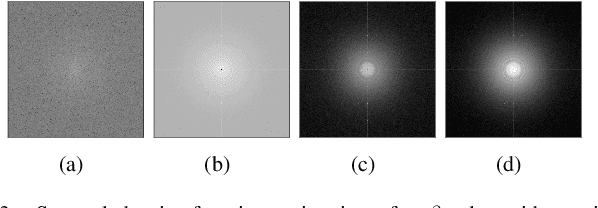

Abstract:When using an electron microscope for imaging of particles embedded in vitreous ice, the objective lens will inevitably corrupt the projection images. This corruption manifests as a band-pass filter on the micrograph. In addition, it causes the phase of several frequency bands to be flipped and distorts frequency bands. As a precursor to compensating for this distortion, the corrupting point spread function, which is termed the contrast transfer function (CTF) in reciprocal space, must be estimated. In this paper, we will present a novel method for CTF estimation. Our method is based on the multi-taper method for power spectral density estimation, which aims to reduce the bias and variance of the estimator. Furthermore, we use known properties of the CTF and of the background of the power spectrum to increase the accuracy of our estimation. We will show that the resulting estimates capture the zero-crossings of the CTF in the low-mid frequency range.
Semi-supervised Learning in Network-Structured Data via Total Variation Minimization
Jan 28, 2019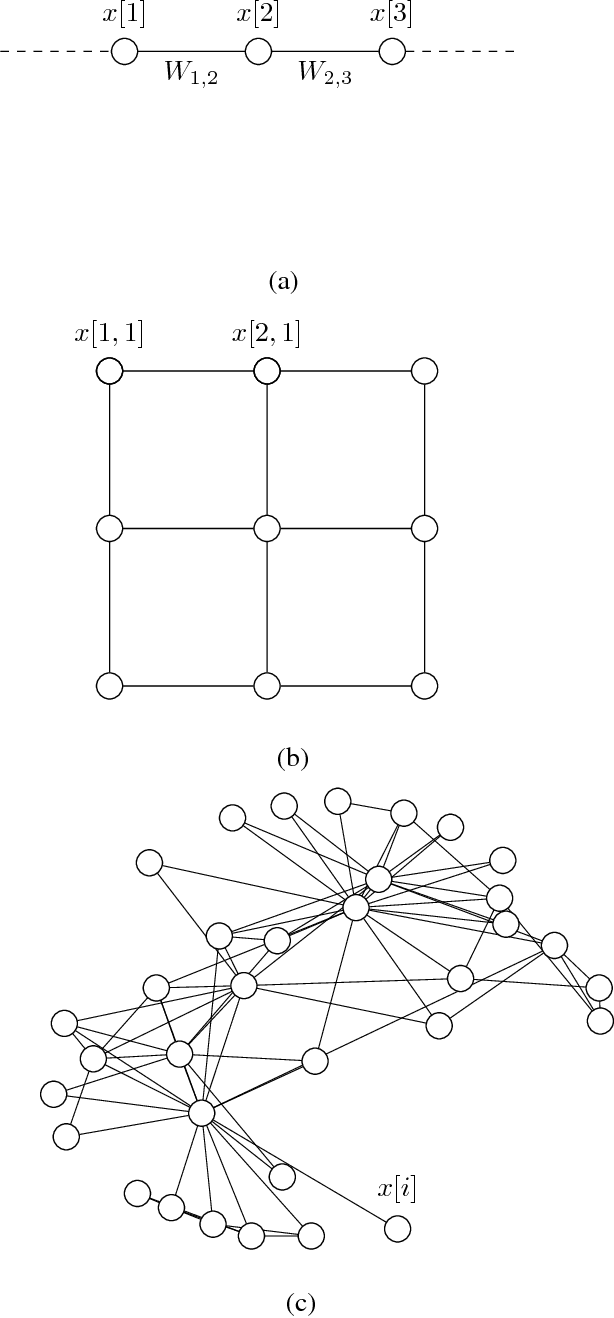
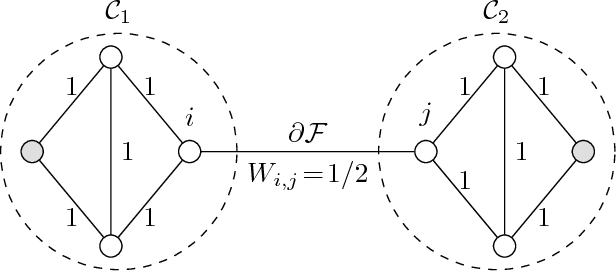
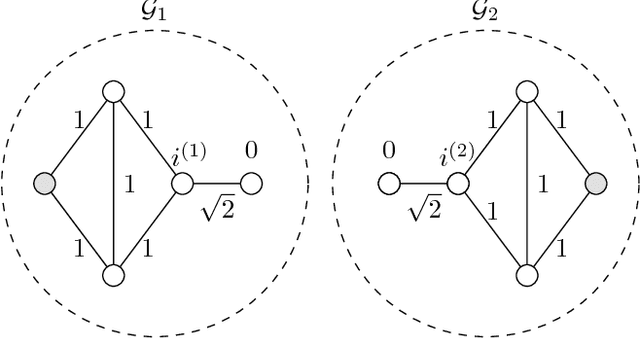
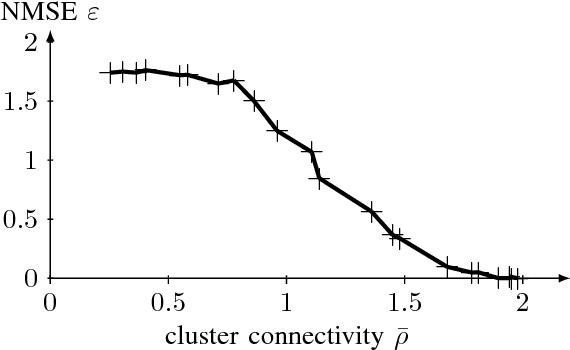
Abstract:We propose and analyze a method for semi-supervised learning from partially-labeled network-structured data. Our approach is based on a graph signal recovery interpretation under a clustering hypothesis that labels of data points belonging to the same well-connected subset (cluster) are similar valued. This lends naturally to learning the labels by total variation (TV) minimization, which we solve by applying a recently proposed primal-dual method for non-smooth convex optimization. The resulting algorithm allows for a highly scalable implementation using message passing over the underlying empirical graph, which renders the algorithm suitable for big data applications. By applying tools of compressed sensing, we derive a sufficient condition on the underlying network structure such that TV minimization recovers clusters in the empirical graph of the data. In particular, we show that the proposed primal-dual method amounts to maximizing network flows over the empirical graph of the dataset. Moreover, the learning accuracy of the proposed algorithm is linked to the set of network flows between data points having known labels. The effectiveness and scalability of our approach is verified by numerical experiments.
APPLE Picker: Automatic Particle Picking, a Low-Effort Cryo-EM Framework
Jun 14, 2018
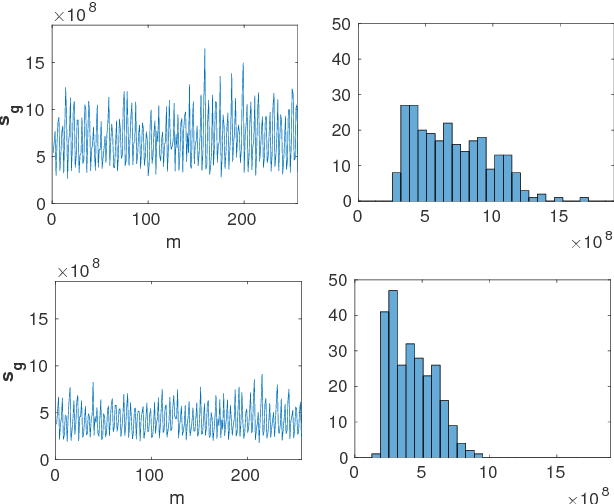
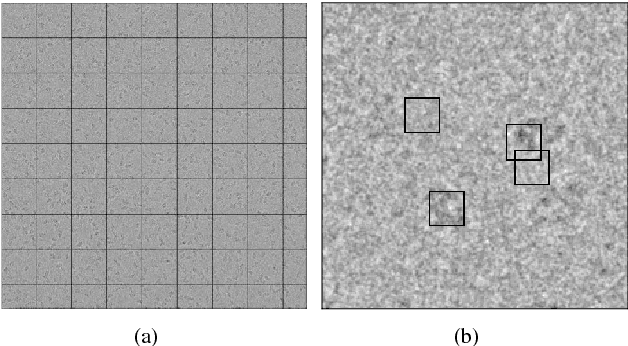

Abstract:Particle picking is a crucial first step in the computational pipeline of single-particle cryo-electron microscopy (cryo-EM). Selecting particles from the micrographs is difficult especially for small particles with low contrast. As high-resolution reconstruction typically requires hundreds of thousands of particles, manually picking that many particles is often too time-consuming. While semi-automated particle picking is currently a popular approach, it may suffer from introducing manual bias into the selection process. In addition, semi-automated particle picking is still somewhat time-consuming. This paper presents the APPLE (Automatic Particle Picking with Low user Effort) picker, a simple and novel approach for fast, accurate, and fully automatic particle picking. While our approach was inspired by template matching, it is completely template-free. This approach is evaluated on publicly available datasets containing micrographs of $\beta$-galactosidase and keyhole limpet hemocyanin projections.
 Add to Chrome
Add to Chrome Add to Firefox
Add to Firefox Add to Edge
Add to Edge